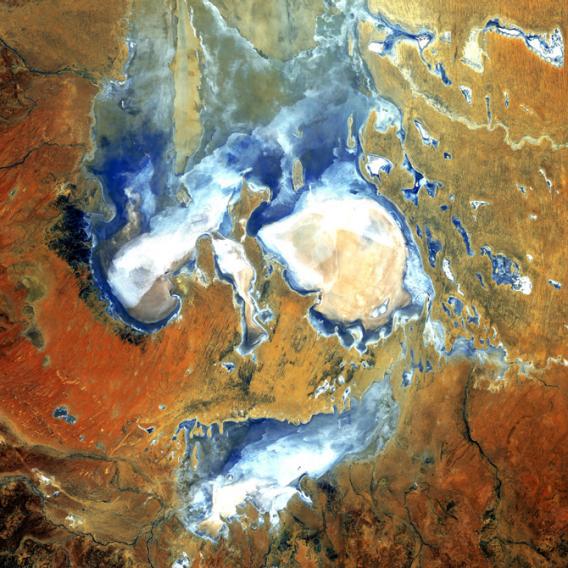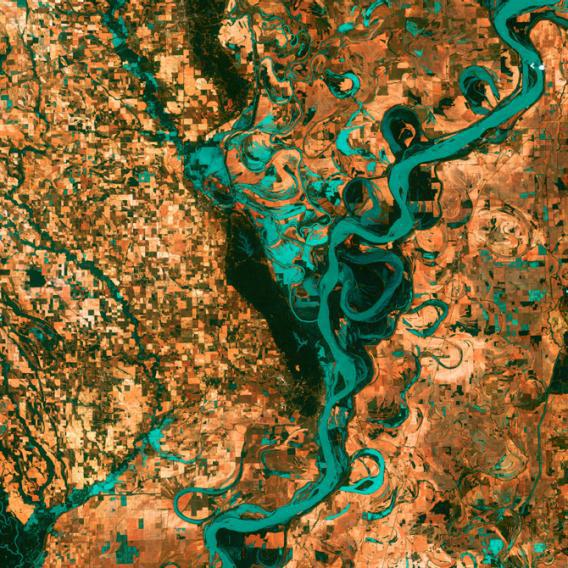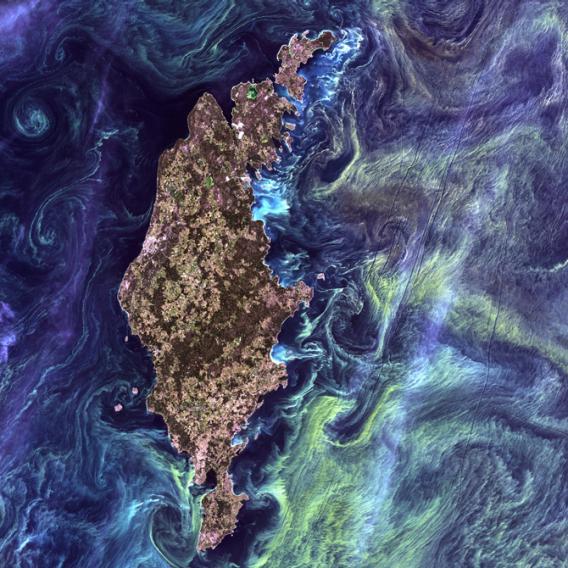To mark the 40th anniversary of the Landsat program, NASA has been publicizing some of the best of the millions of images of Earth taken by the Landsat satellites over the years. Most of them are, frankly, depressing. Impressive, important—but dispiriting, in that they show just how quickly we’re degrading what’s left of the planet’s natural environment.
Take these time-lapse images of the Aral Sea, the once-vast saltwater lake that borders Kazakhstan and Uzbekistan. Formerly home to a thriving fishing industry, the lake has shrunk so much due to irrigation projects in the surrounding desert that it is no longer a single lake but a ragtag collection of much smaller lakes and, increasingly, bone-dry seabeds.
Similarly alarming is the sprawling growth of Las Vegas and the corresponding shrinkage of nearby Lake Mead, which supplies the desert metropolis with water. And time-lapse images from the Amazon show how roads beget farms, which beget more roads and farms, with the once-virgin rainforest vanishing in their wake.
But that’s all old news for anyone who’s been paying attention. So let’s focus instead on a less-gloomy aspect of the celebration: the “Earth as Art” collection, a series of Landsat images digitally colored in by the U.S. Geological Survey to highlight their aesthetic appeal. Out of more than 120 images, NASA and the USGS asked the public to vote on the top five. Here they are, in order from fifth to first.

NASA’s Goddard Space Flight Center/USGS

NASA’s Goddard Space Flight Center/USGS

NASA’s Goddard Space Flight Center/USGS

NASA’s Goddard Space Flight Center/USGS

NASA’s Goddard Space Flight Center/USGS
All photos and captions are courtesy of NASA’s Goddard Space Flight Center and the USGS.
